Out of all mental disorders, anxiety disorders are most common, affecting almost a third of adults during their lifetime.
About a quarter of US adults experience symptoms of anxiety disorder. And around 3% of adults are affected by generalized anxiety disorder, the main symptom of which is excessive worrying about everyday things.
Feeling anxiety some of the time is normal and even helpful, like just before going on stage or preparing for an exam. In these cases, cortisol, often called the stress hormone, puts you into a state of alert, preparing your body and mind for “battle.”
Anxiety can also be a warning signal that alerts us when things don’t feel right. Following this gut reaction can help us pursue goals that align with our needs and values and even save our lives in dangerous situations.
Plus, without David exploring yoga as a way to manage anxiety, the world could have missed out on DoYogaWithMe – so good things can definitely come from feelings of anxiety.
However, when anxiety interferes with your daily life and edges toward becoming a disorder, it may be time to follow David’s lead and allow yoga to help you navigate those feelings and take back control of your body, mind, and emotions.
What Is Anxiety Disorder?
Anxiety disorder makes it more likely for you to respond to situations with fear and dread, which can impede your ability to function and respond.
The most common symptoms of anxiety disorder include:
- Aches, such as headaches, muscular aches, and stomach cramps
- Difficulty concentrating
- Heart palpitations
- Irritability
- Restlessness
- Shortness of breath
- Tense muscles
- Tiredness
- Trouble sleeping — both falling asleep or staying asleep
Yoga is not a magic cure for anxiety disorders, but regular practice may help you manage your symptoms.
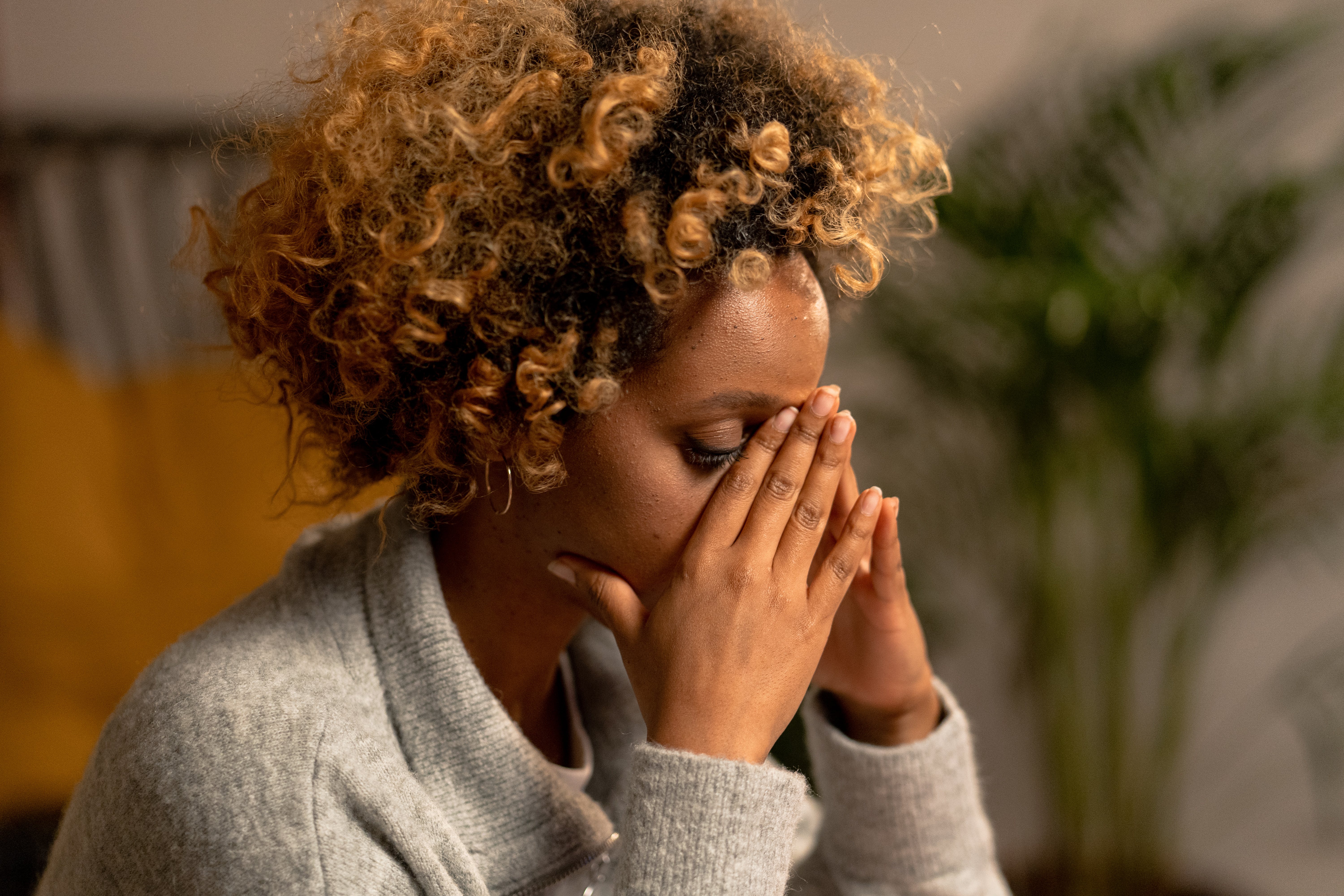
In this post, we’ll look at some studies and evidence regarding how you might use (or start) yoga to manage anxiety so it does not impede your ability to achieve your goals and enjoy your daily life.
Yoga’s Advantages Over Other Ways of Managing Anxiety
Aside from its scientifically proven effectiveness, which we’ll flesh out in the next section, yoga is good for managing anxiety because it’s widely accessible, healthy, and adaptable for most individuals.
There is less risk of negative side effects on your physiology compared with medication like antidepressants, making it an excellent natural treatment for anxiety.
Not everyone has access to a therapist. Finding 5 minutes to perform some yoga on a mat or in a chair, however, is more accessible for many people.
The performance of yoga postures is very physical. So is anxiety. Anxiety can give you a heavy feeling or a knot in your stomach; it can create tension throughout your body; and ultimately, it can express itself as pain.
A regular yoga practice gives you something to look forward to, especially as the benefits stack up over time. Yoga in the morning may help set you up to meet the challenges of the day. Yoga in the evening might help you let go of the day’s frustrations or process the day’s events so you can let go of stress and get some good sleep.
Finally, community is a great side effect of doing yoga.
Anxiety can make people withdraw. People living with anxiety often feel like they are the only people who feel the way they do. This feeling of loneliness can worsen anyone’s anxiety and suffering.
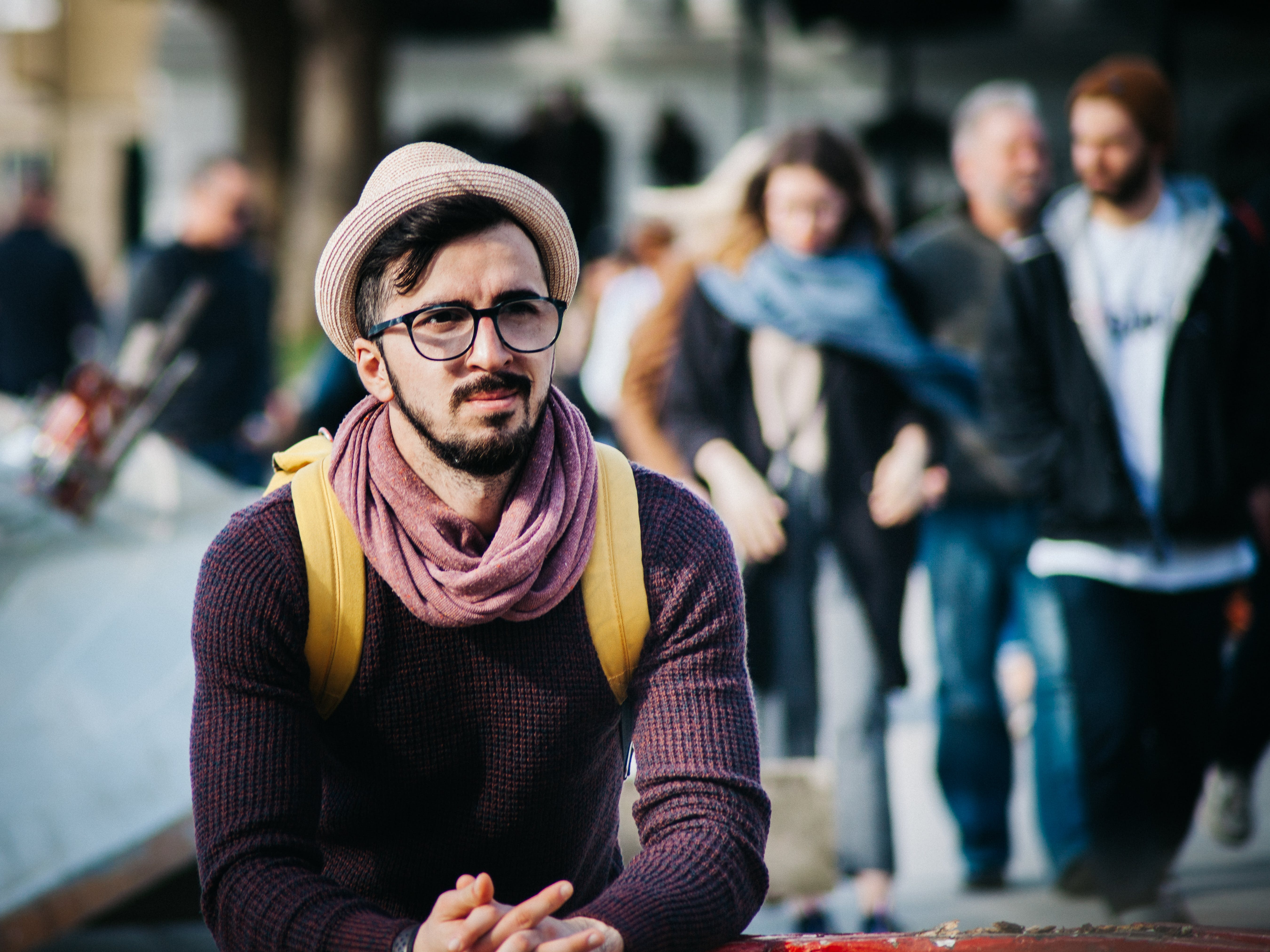
Whether performed online with a favorite instructor or in a class with friends, yoga classes can provide a sense of community.
An Overview of The Science of Yoga for Managing Anxiety
There’s plenty of anecdotal evidence of yoga helping people manage anxiety, stress, and depression, but it’s important to back this up with science.
According to science, here’s what yoga could do for you.
Yoga Can Reduce Stress
Research has shown that yoga can reduce the production of cortisol, often called the stress hormone, through relaxing breathing techniques and mindfulness.
Yoga May Help You Respond in a More Balanced Way to Stressful Events and Situations
Meditation, a core component of a complete yoga practice, reduces activity in the limbic system. That’s beneficial to people with symptoms of an anxiety disorder because that’s the part of the brain associated with emotions. Yoga reduces emotional reactivity.
Yoga Can Be More Effective Than Stress Management Classes
Researchers at the NYU Grossman School of Medicine found that cognitive behavior therapy (CBT) was most effective for managing generalized anxiety disorder with 71% of those treated with CBT during the study reporting meaningful improvement in symptoms.
Yoga was not too far behind, however, as 54% of those practicing yoga for the study reported results that met the criteria for meaningfully improved symptoms, far above the results for those who participated in stress management sessions at 33%.
Yoga May Help You Be More Positive
A study on the effects of yoga on stress, anxiety, and depression in Iran found that the intellectual and mental aspects of yoga may improve the way yoga practitioners feel. Furthermore, yoga practice can make practitioners better equipped to monitor and manage stress, deal with negative emotions, increase positivity, and be more psychologically balanced.
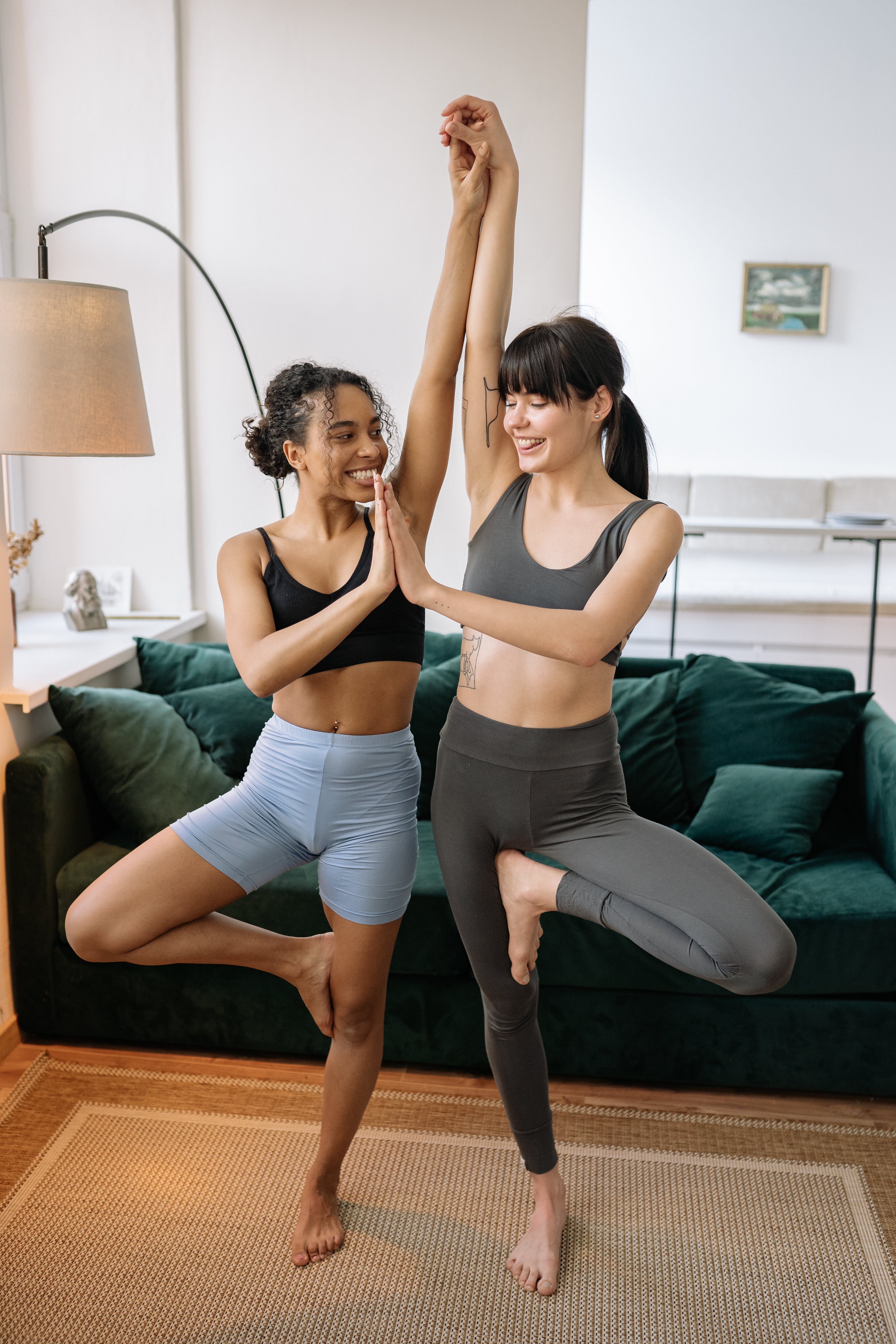
Yoga Could Help With PTSD As a Complementary Therapy
Several studies found that yoga may help people with PTSD as an add-on treatment. Yoga was found to be effective in reducing emotional arousal and intrusive memories and resulted in steadier breathing, associated with activating the parasympathetic nervous system. In addition to helping to run processes like digestion, the parasympathetic nervous system also helps your body relax following stress or danger.
Yoga May Lower Your Blood Pressure
Yoga has been found to lower blood pressure, which can make people feel more relaxed. The most significant results came from holistic yoga sessions including asanas, meditation, and breathing.
Yoga Can Have Long-Lasting Results for People With Anxiety and Depression
In a review of 15 studies that compared the effect of complementary therapies on mental health, yoga and music were found to be the most beneficial for anxiety and depression, while yoga appeared to provide the most enduring benefit.
Yoga Can Reduce Anxiety and Depression
A study into the therapeutic effects of yoga found that practicing yoga could be effective in reducing physical, physiological, emotional, and spiritual pain and suffering.
Among other benefits — including physical strength and flexibility, improved respiratory function, improved sleep patterns, and better overall well-being and quality of life — researchers found that yoga reduces stress, anxiety, depression, and chronic pain.
Takeaways from the Science of Yoga for Anxiety
In many cases, the science of yoga and anxiety needs more research. There is sometimes a desire for larger pools of study participants or a wish for more studies to be conducted over a longer period to properly assess the profundity of how yoga affects the body and mind, and for how long.
For now, we know that talking therapy, such as CBT, can provide long-term change and improvements in the ability to manage stress, but that science also finds yoga to be beneficial as a complementary therapy and that it can be an effective nonpharmacological and noninvasive way to help manage stress, anxiety, and depression.
Also, yoga practitioners may notice positive changes relatively quickly compared to those only focusing on CBT or talking to a therapist. This is partly due to the accessibility of yoga, especially with on-demand online yoga classes dedicated to anxiety, stress, and depression.
Finally, science finds that for those who do yoga, a consistent, regular practice over time has the most benefits.
Meditation, Mindfulness, Pranayama, and Yoga Poses for Anxiety
Anxiety and stress express themselves through physical sensations, physiological changes, breathing, thoughts, emotions, and feelings.
Yoga can be particularly effective for reducing anxiety and stress because yoga works on your mind, body, breathing, and emotions.
Meditation for Anxiety
Calm focus through yogic meditation or pranayama can help quiet negative internal chatter.
Trying to talk yourself out of being anxious can add to the noise and result in unhelpful self-judgment.
Quieting the mind, however, can be a more effective way of dealing with over-critical, negative thinking that overwhelms us.
Mindfulness to Remain in the Moment
When you are mindful, you maintain awareness of your thoughts, feelings, and physical sensations.
Getting better attuned to your feelings and emotions can help you feel, accept, and experience your emotions without judgment.
If you are dealing with PTSD or deep emotional trauma, working with your emotions requires particular care and may benefit from professional guidance. For many, however, mindful engagement with anxiety may be healthier than bottling up or avoiding negative emotions.
Pranayama or Breathing Exercises
Breathing exercises, patterns, and regulation affect the flow of your energy. It’s a vital component of yoga practice because it helps your awareness of the connections between your body and mind.
Incorporating pranayama into your yoga practice will help you maximize the benefits associated with yoga for managing stress and anxiety.
Yoga Poses for Anxiety
Some yoga asanas are particularly useful for reducing stress. Popular yoga poses for anxiety include:
- Sukhasana or Easy Pose
- Balasana or Child’s Pose
- Cat/Cow Flow or Maryjaryasana/Bitilasana
- Viparita Karani or Legs Up the Wall Pose
- Uttanasana or Standing Forward Bend
- Savasana or Corpse Pose
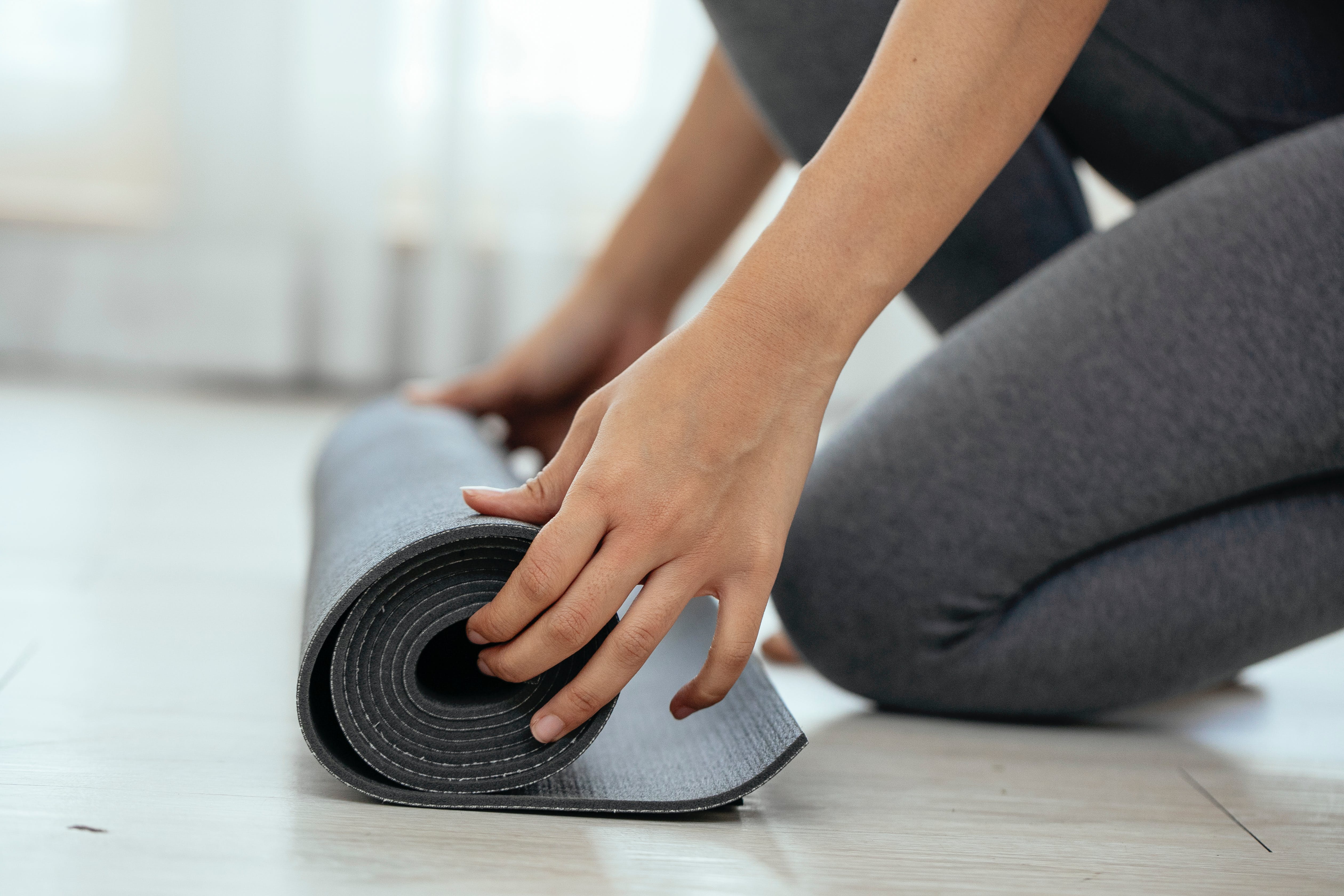
Sukhasana or Easy Pose
How sukhasana can help with anxiety:
Adopting this pose may engender a feeling of physical grounding and help focus the mind. The mind-body connection that evolves during this pose can promote a profound sense of calm, so it’s a great position in which to meditate or be mindful.
How to do sukhasana:
Note that easy pose refers to you being at ease rather than the pose being easy to perform. It can be tricky because as adults we become accustomed to sitting in chairs. However, while the posture is deceptively complex, there are many variations you can use to get there comfortably and start feeling the benefits.
- Come to a cross-legged position on your mat by bending your knees, crossing your shins, and then sliding your feet under your knees. Your left foot will be under your right knee and your right foot will be under your left knee.
- Feel free to tilt or lean gently from side to side to balance your weight across your seat.
- Ultimately, your shoulders should be aligned directly above your hips.
- Lengthen your tailbone.
- Slide your shoulder blades down and back.
- Root down through your seat.
- Allow the crown of your head to rise towards the ceiling.
- Feel the lengthening of your spine.
- Release your lower back and hips.
- Place your hands on your knees, palm down (to feel more grounded) or palms up (to feel more receptive), or let them rest in your lap.
- Hold a soft gaze straight ahead.
- Swap legs so that the bottom leg gets a chance to be on top.
You may find that sitting on a blanket, cushion, or yoga block can give you added height to make this position more comfortable. You might also try objects for support under each knee.
You can also hold this position in a chair, in which case you should root your feet a comfortable distance apart with your ankles directly aligned below your knees.
Balasana or Child’s Pose
How balasana can help with anxiety:
Frequently adopted between flows or postures for recovery or relaxation, child’s pose offers security and peace and helps calm the mind.
How to do balasana:
- From a kneeling position, spread your knees the width of your mat and sit back on your heels.
- Sink your belly down between your thighs.
- Relax your forehead on your mat, a yoga block, or a cushion.
- Either stretch your arms in front of you with your palms facing down or allow them to lie back alongside your thighs with the palms up.
- Relax your shoulders, jaw, and eyes.
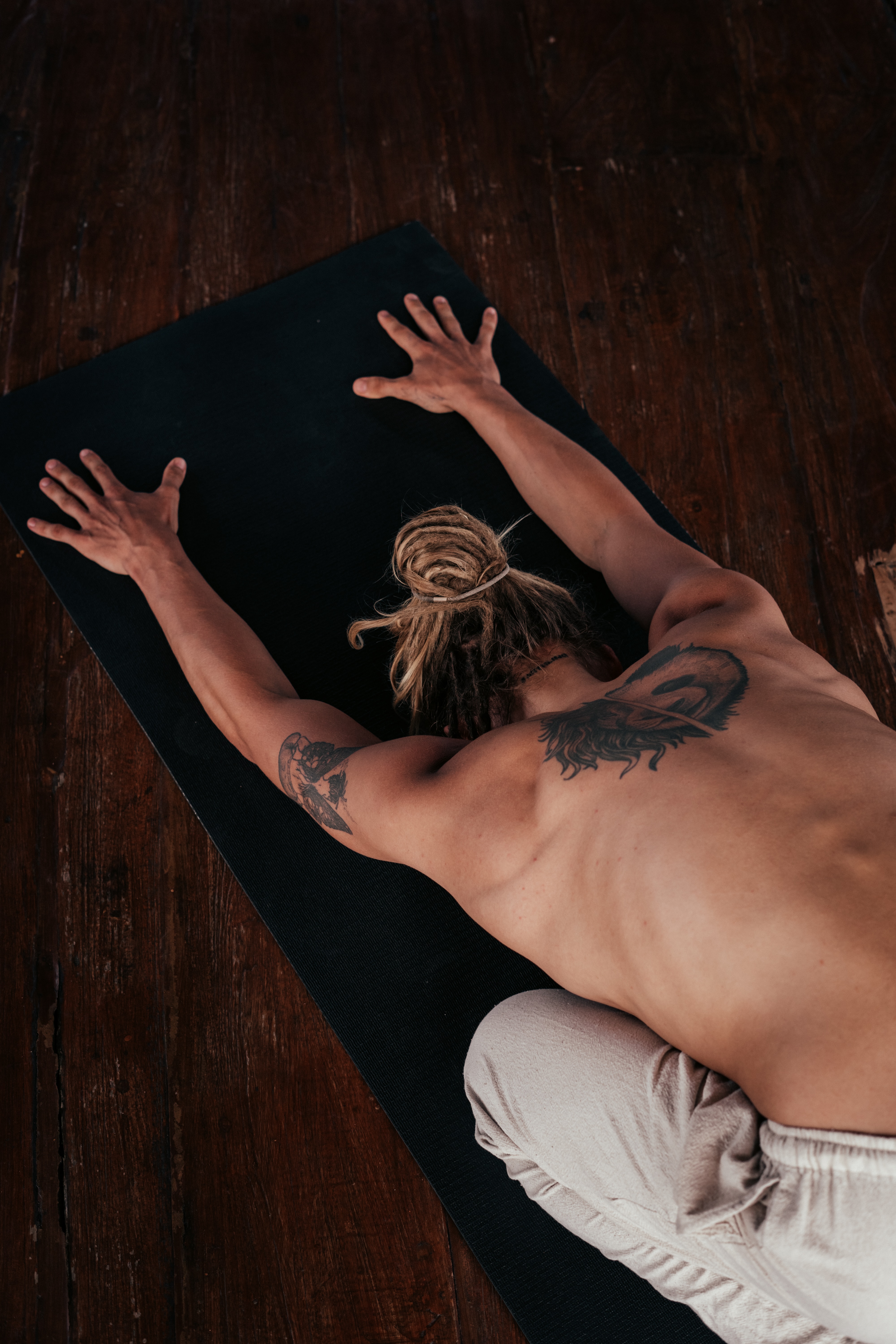
Cat/Cow Flow or Marjaryasana/Bitilasana
How cat/cow flow can help with anxiety:
This short flow in which you transition from cat to cow and back again several times can relieve and stretch the spine, shoulders, and neck. It’s great for relieving tension in the back muscles, which can sometimes suffer during times of stress or anxiety.
How to do cat/cow flow:
- Start on all fours.
- Your hands should be flat on the ground with your shoulders directly above your wrists.
- Align your hips over your knees.
- Move into cat pose first by tucking in your tailbone and rounding your spine toward the ceiling. Gaze towards your navel.
- Transition smoothly through a neutral spine into cow pose, arching your back, dropping your belly toward the mat, and lifting your head up so you can gaze at the ceiling.
- Continue to flow between these two postures.
Viparita Karani or Legs Up the Wall Pose
How Viparita Karani can help with anxiety:
This posture might create calm by relieving muscular tension in the legs and altering the direction of blood flow.
How to do viparita karani:
- Sit on your mat with feet flat against the ground, your knees drawn in toward your body, and your legs towards the wall.
- Lie down flat on your back and position your legs up against the wall. Visualize it as sitting on the wall with your legs straight - except the torso is horizontal and the legs are vertical!
- Using your hands for balance, shift your hips and tailbone closer to the wall to find the point where you feel comfortable.
- Rest your shoulders, back, and head on the floor.
- Focus on your breathing.
- Relax your body and mind.
- Hold this pose from 5 – 20 minutes.
- To release, gently push yourself away from the wall and lie on your back for a few moments. Take your time getting up to avoid lightheadedness.
- To sit up from your lying position, draw your knees toward your chest and roll gently to one side. Then use your hands to press yourself up into a seated position.
You may wish to use a cushion, blanket, or yoga block to support your hips. Likewise, you may also appreciate some support under your neck.
Uttanasana or Standing Forward Bend
How Uttanasana can help anxiety:
A common pose or movement in yoga sessions, uttanasana may help calm the nervous system by releasing muscular tension in the back and hamstrings.
How to do uttanasana:
- Stand with your feet hip-width apart.
- Engage your quadriceps to gently pull the kneecaps up or focus on bending your knees very slightly so they are not locked. Bend them more if that’s more comfortable.
- Without rushing, bend from the hip joints, not the waist. Keep your back flat.
- Adjust your weight if necessary so your hips stay over your ankles.
- Let your head hang relaxed.
- Place your palms on the floor or grab the backs of your ankles, place them on yoga blocks, or grab opposite elbows according to your flexibility.
- Feel your torso lengthen.
- Hold, breathing evenly.
- To release, you can put your hands on your hips, contract your abdominal muscles, and roll your spine upward so that your shoulders and head are last to rise.
Savasana or Corpse Pose
How savasana can help with anxiety:
Very important to restorative yoga, this pose is usually adopted at the end of a yoga session to assimilate the learning of the yoga practice and achieve deep relaxation.
How to do savasana:
- Lie on your back on your mat with your arms relaxed at your sides, palms up.
- Allow your legs to lie straight, as wide as your mat, feet falling outwards in a natural, comfortable position.
- Close your eyes.
- Focus on slow, deep breaths.
- Relax your face. Soften your jaw.
- Mindfully scan the body from toes to head to relax tension.
- Let go. Allow your body to sink into the mat.
- To exit savasana, start by deepening your breath, then wriggling your fingers and toes.
- Draw your knees into your chest and gently roll to one side. Use your hands to push yourselves up into a seated position.
Use a blanket or any other prop necessary to make sure you are warm and comfortable.
DYWM Classes for Anxiety
Anxiety is a subject close to our hearts here at DYWM.
That’s why we have a plethora of classes and courses to help you take control of your mind and emotions.
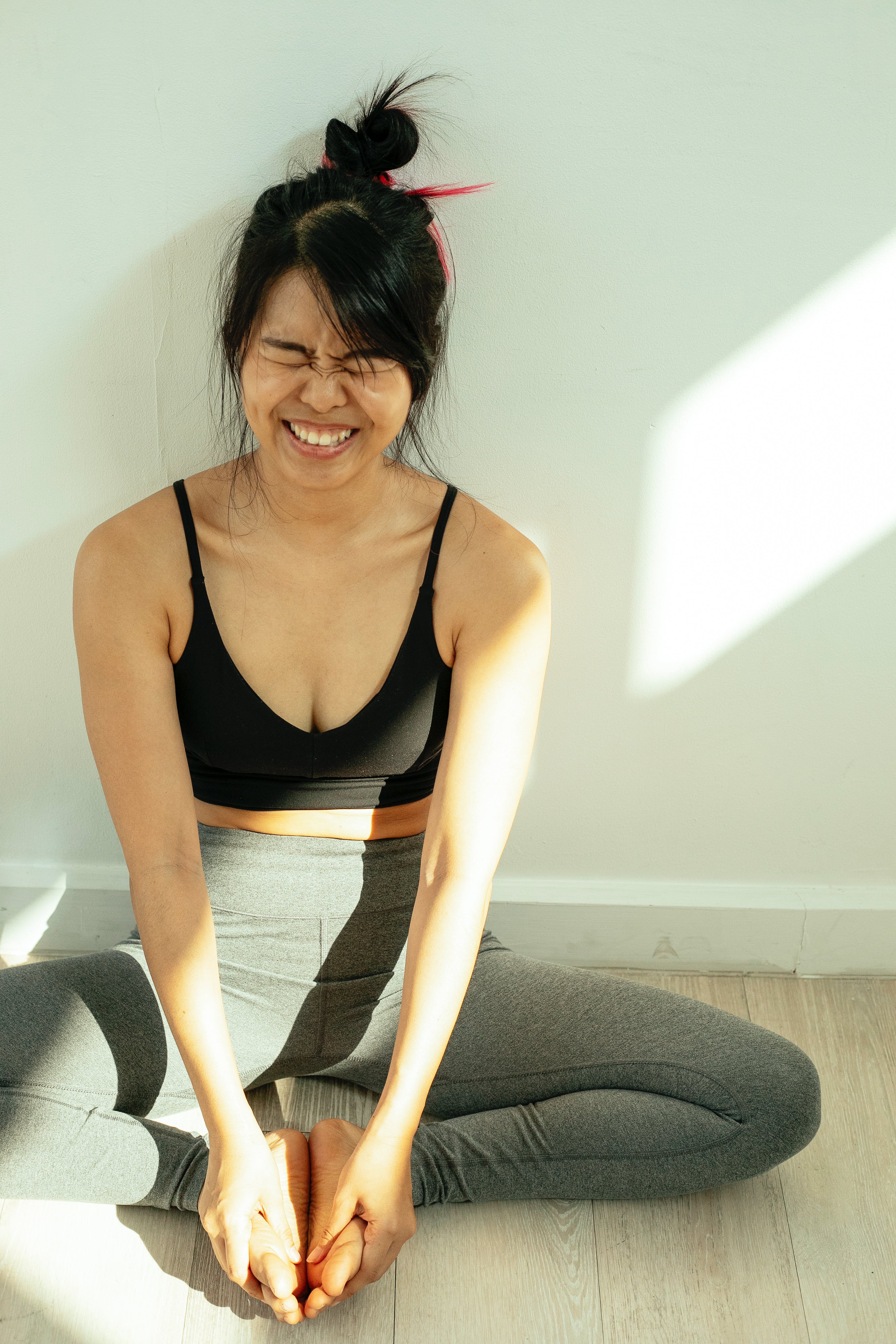
- Pranayama for Anxiety 1 gives you an introduction to pranayama, showing you how to calm your nervous system and calm the mind.
- Pranayama for Anxiety 2 builds on that foundation so that you are better able to calm your nervous system through breathing techniques and meditation.
- In Pranayama for Anxiety 3, David shows you how to use breathing to activate your nervous system and improve your energy levels and focus.
- In Yoga for Anxiety, David uses personal experience and yoga expertise to explore self-reflection, vulnerability, how anxiety feels in the body, and how to move through it.
- For a more vigorous class in which you can jettison pent-up emotions and move your energy, join David to Get It Out!
- Melissa also draws on her personal experience of anxiety to help you make life fun again in Yoga and Anxiety: Playfulness, which is also part of the Strength & Support for Mental Wellness Program.
- Alternatively, stay grounded with Melissa’s gentle beginner floor class for the whole body: Gentle Yoga for Reducing Anxiety or add in strength training to build both emotional and physical strength in Yoga for Anxiety: Building Strength and Resiliency, day 2 of the Strength & Support for Mental Wellness Program.
- Yoga for Families: Let Go of Worry and Anxiety with Alyssa Jean Klazek is designed for families and kids aged 9-16, to help them slow down and return to the present with breathing techniques to calm anxiety, warrior poses for empowerment, and restorative postures for calm that lasts.
- Yoga for Chronic Stress, Anxiety, and Depression is an excellent 3-week course that’s free for subscribers.
With a commitment to 10 – 61 minutes per day, this course will help you better understand stressful feelings, explore those feelings, and how to cope with negative symptoms through pranayama, guided meditations, focused yoga sessions, and relaxation with David and four other amazing DYWM instructors.
This 3-week program includes a series of Guided Meditations for Stress, Anxiety, and Depression, available to all access levels, collected here to help you achieve deep relaxation, release, and inner peace.
Here to Help You Manage Anxiety
Anxiety can suck the pleasure out of life and replace it with fear and dread. It can begin a cycle of withdrawal from things that normally give you pleasure and add to further spiraling into anxiety about your withdrawal.
The holistic practice of yoga can help you manage all this and can work well as a complementary practice to therapies like CBT or medication.
You don’t need to face anxiety alone. Take our online classes for anxiety or join our community on the forums. We’re here to help you break the cycle and feel better.



Comments
Existing Comments